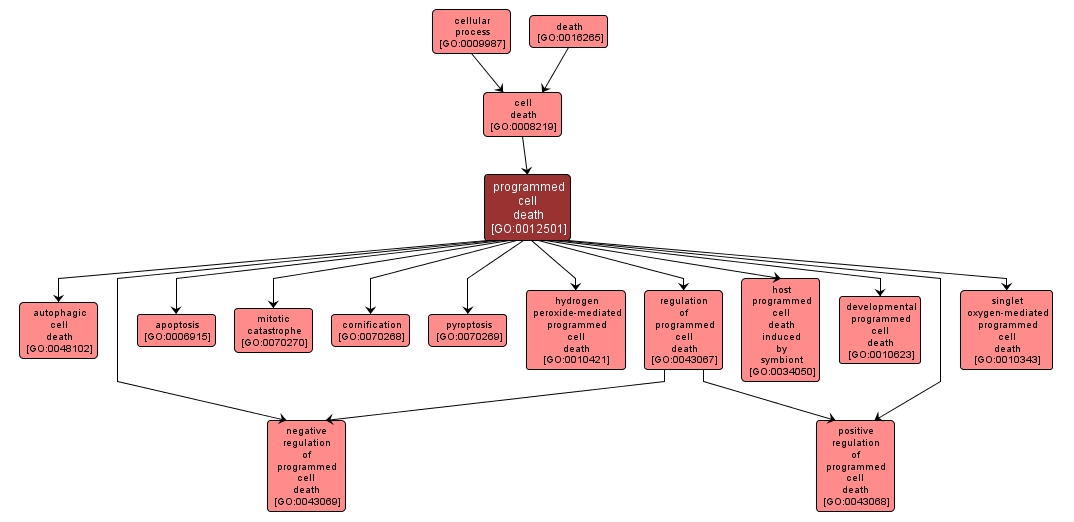GO TERM SUMMARY
|
| Name: |
programmed cell death |
| Acc: |
GO:0012501 |
| Aspect: |
Biological Process |
| Desc: |
Cell death resulting from activation of endogenous cellular processes. |
Synonyms:
- non-apoptotic programmed cell death
- GO:0016244
- nonapoptotic programmed cell death
|
|

|
INTERACTIVE GO GRAPH
|














